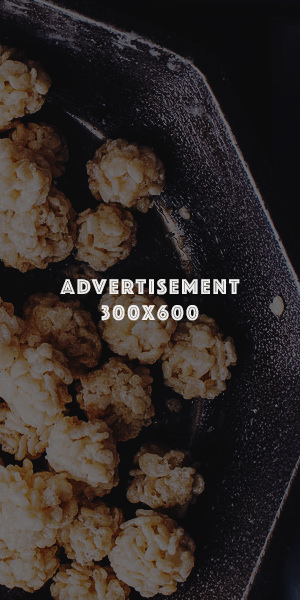These days, it’s easy to get your hands on amazing chocolate from all over the world—chocolate that, until recently, was considered way too good for baking. Now it’s not unusual to use top-notch chocolate in everything from brownies to birthday cakes. True, it’s always good to use the best ingredients you can find, but if you’re thinking that excellent chocolate is the key to intensely flavored chocolate desserts, think again. When it comes to delivering deep, dark chocolate flavor, plain old cocoa powder is hard to beat.
Cocoa and chocolate: What’s the difference?
Cocoa is by no means a lesser product than chocolate. On the contrary, it’s a purer form of chocolate. Chocolate has two main components—cocoa solids (where the flavor comes from) and cocoa butter (where the rich texture comes from). Cocoa powder has very little cocoa butter in it; it’s mainly cocoa solids. In other words, you can think of cocoa powder as chocolate with most of its cocoa butter removed. Cocoa powder generally contains just 10 to 12% cocoa butter, while pure unsweetened chocolate contains about 55%. So, ounce for ounce, cocoa powder packs a bigger punch of chocolate flavor, because you’re getting more cocoa solids and less cocoa butter.
Cocoa: Dutched or Natural?
Recipes that use cocoa often specify either natural or Dutch-process cocoa. Dutch-process cocoa has been treated with alkali, which increases the pH and mellows sharp flavors. You may find that Dutch-process cocoa tastes flat compared to natural cocoa, so it’s important to use a good brand. It’s best to keep both kinds of cocoa on hand for baking cakes, because the success of recipes that call for one or the other depends on the batter having a specific ph. If you have a strong preference for one type of cocoa, though, it’s fine to substitute a portion of it into any recipe, even cakes.
When to use cocoa and when to use chocolate
When I create a recipe for a chocolate dessert, flavor isn’t the only attribute I consider—texture is also important. The finished texture of a dessert is strongly influenced by the types of fat in the recipe, be it butter, oil, cocoa butter from chocolate, or a combination.
In creamy desserts, chocolate’s usually best. Some desserts need the silkiness that only cocoa butter can provide. Cocoa butter is an unusual fat because it melts at a temperature very close to our body temperature. Chocolate that’s hard and solid at room temperature feels rich on the tongue. In puddings, ganache, and mousses, the luxurious mouth-feel of cocoa butter really shines, so for these desserts, chocolate (yes, the best you can find) is almost always preferable to cocoa powder. That doesn’t mean cocoa powder is a no-no for such recipes. In fact, adding a tablespoon or two to puddings or mousses along with the chocolate can boost the flavor without altering how the custard sets up.
In cakes, the choice is more complicated. Cakes made with cocoa and cakes made with chocolate can differ remarkably in flavor and texture. And those differences have a lot to do with the other fats used in the recipe.
Cakes made with cocoa powder and oil are tender and intensely flavored. Consider devil’s food cake, for example. Its deep flavor, dark color, and moist texture come from pairing cocoa powder with oil. The flavor is intense because there’s no milk or butter to dilute the pure chocolate flavor of the cocoa solids. (My favorite devil’s food cake recipe calls for about a third as much cocoa as flour: ¾ cups unsweetened cocoa powder to every 2½ cups flour.) And the texture is moist because vegetable oil is liquid at room temperature (and even when cool), unlike butter and cocoa butter, which are solid. You can serve devil’s food cake refrigerator-cold, and it will still be exceptionally tender.
Chocolate cake made with chocolate, on the other hand, is temperature-sensitive. If you’ve ever been served a slice of cold chocolate cake that was dry and crumbly, it may well have been made with chocolate. Remember, cocoa butter is hard even at cool room temperature. The cake’s flavor suffers, too, because the cocoa butter is what carries the chocolate flavor, and the colder it is, the longer it takes to melt on your tongue and release the flavor. This is not to say that cakes made with chocolate are unpleasant; you just need to remember to serve them at room temperature. And, the fact is, the cocoa butter can make for a pleasantly firm cake, especially if the recipe contains at least 4 ounces of unsweetened chocolate—think of a rich Bundt cake with a dense, springy crumb.
In brownies, cocoa yields chewy results, while chocolate gives a fudgy texture. Chocolate lovers can be snobby about brownies, but the fact is that cocoa powder makes for fabulously rich, chewy brownies. Brownies are chewy when they’re high in sugar, fat, and eggs but low in flour. The last variable to their final texture is the nature of the fat used in the recipe—specifically how hard the fat is at the temperature the brownies are to be served. Butter is soft at room temperature, so brownies made with cocoa plus butter (or oil) have a noticeably soft, chewy texture. And the flavor is intensely chocolatey with a wonderful lingering buttery flavor. By contrast, brownies made with chocolate plus butter are often firmer, almost fudgy, because cocoa butter is harder than butter at room temperature. The more chocolate the recipe contains, the fudgier the brownies will be.
Compare hot cocoa and hot chocolate
Here’s an easy way to experience the difference between cocoa and chocolate. Online many recipes are available for hot cocoa (front cup) uses cocoa powder (with milk) and it’s plenty chocolatey. The cup in the background is hot chocolate, made with chopped bittersweet chocolate. The cocoa butter makes it taste richer, but the chocolate flavor is more muted at first.

